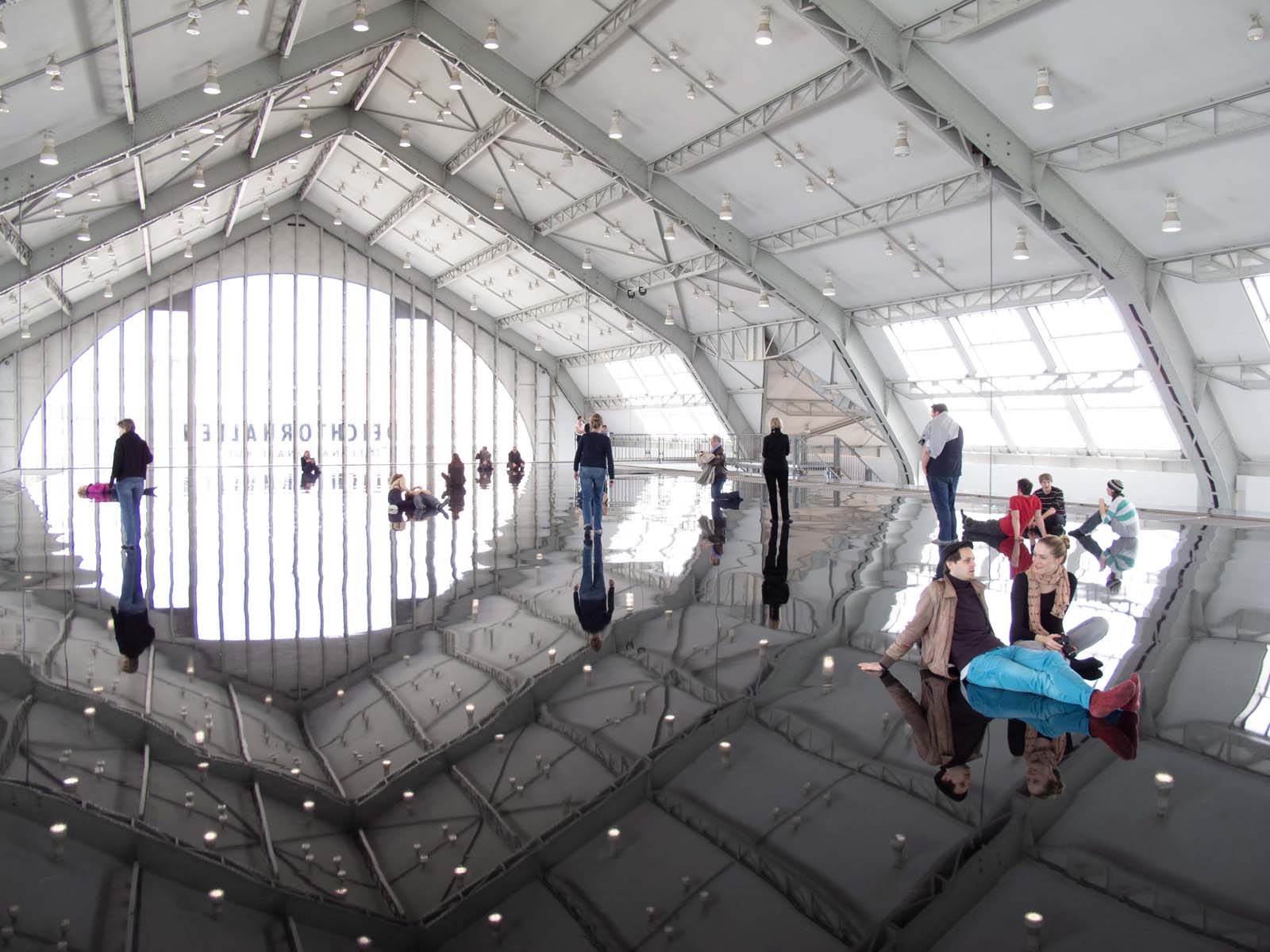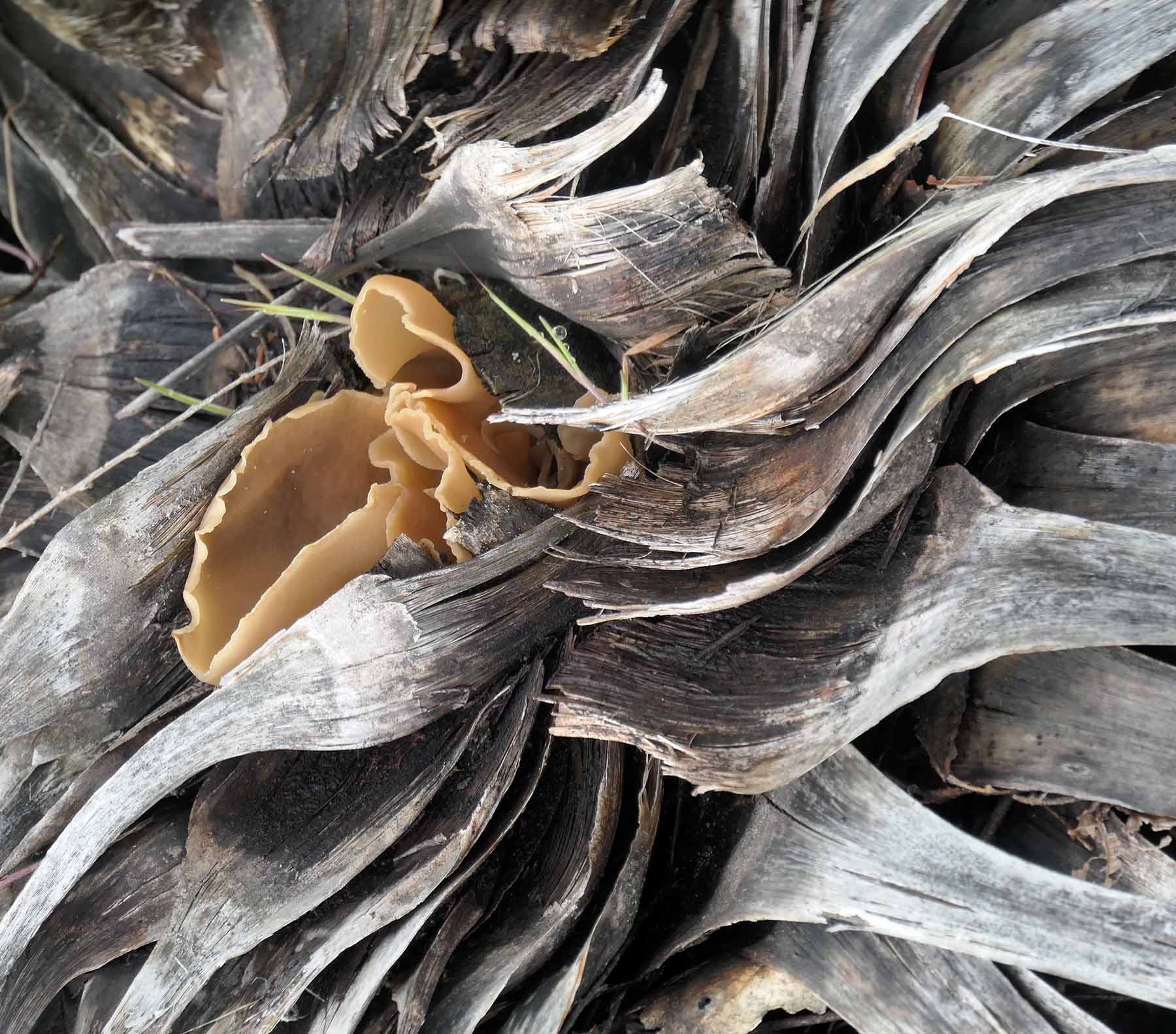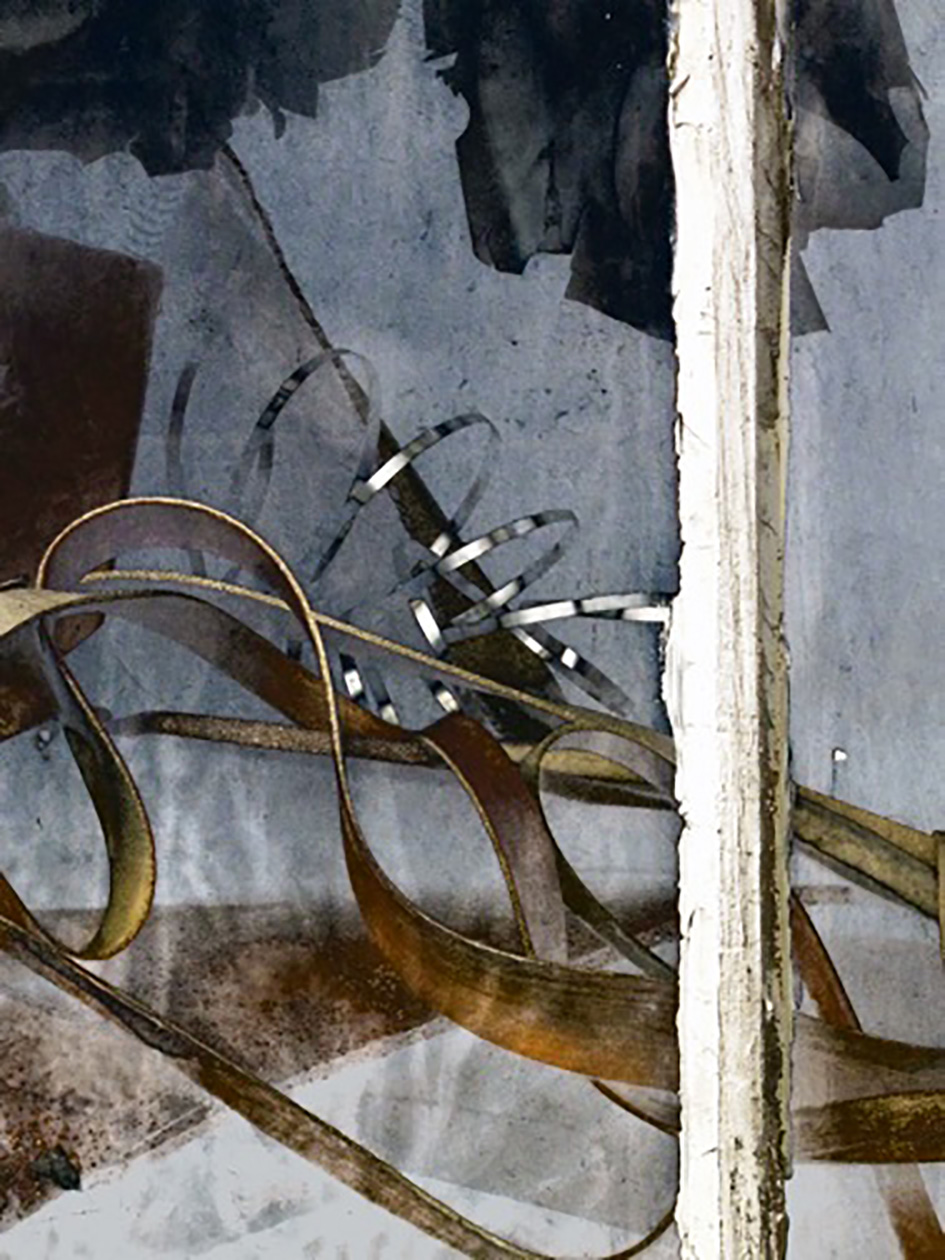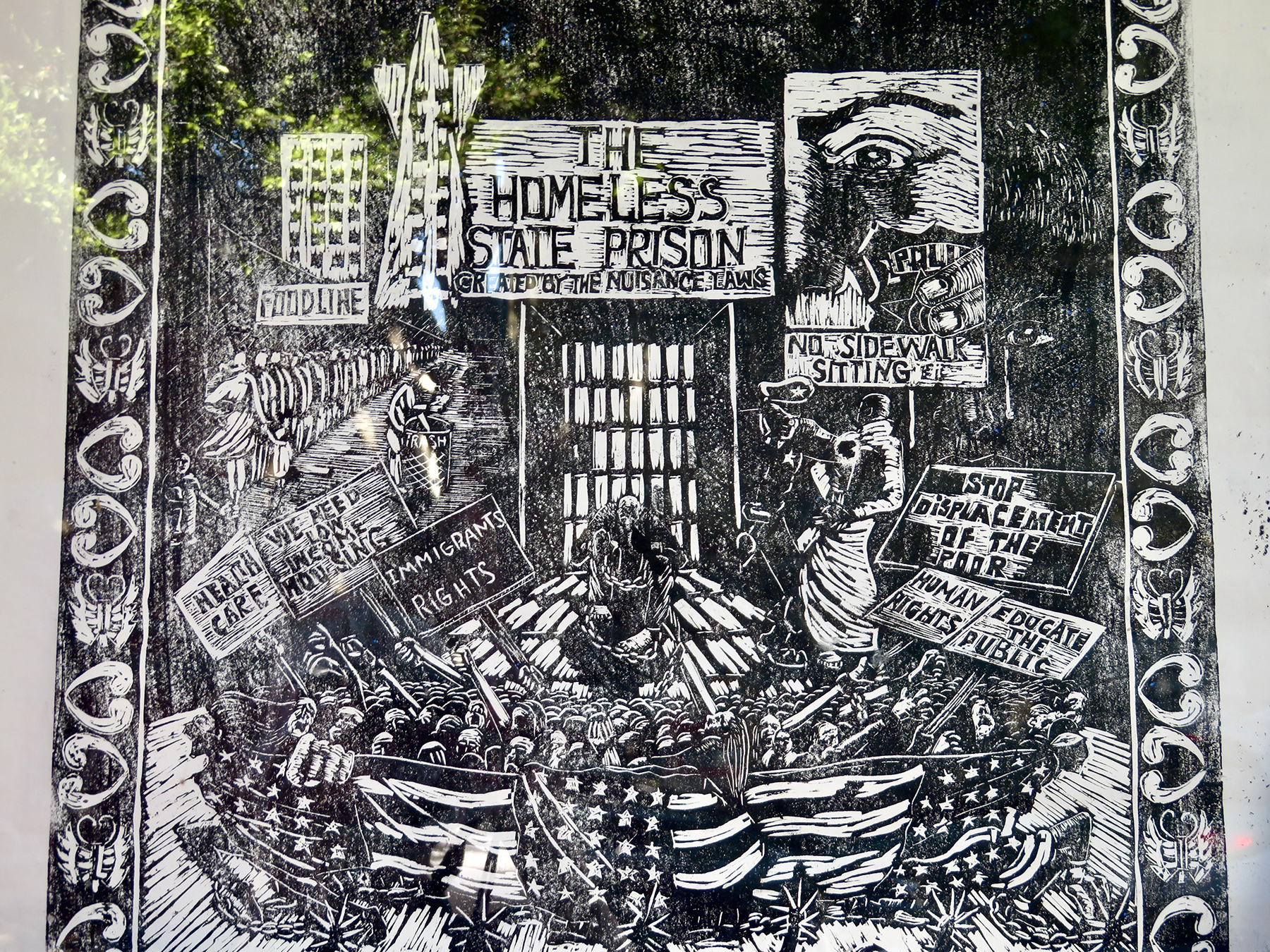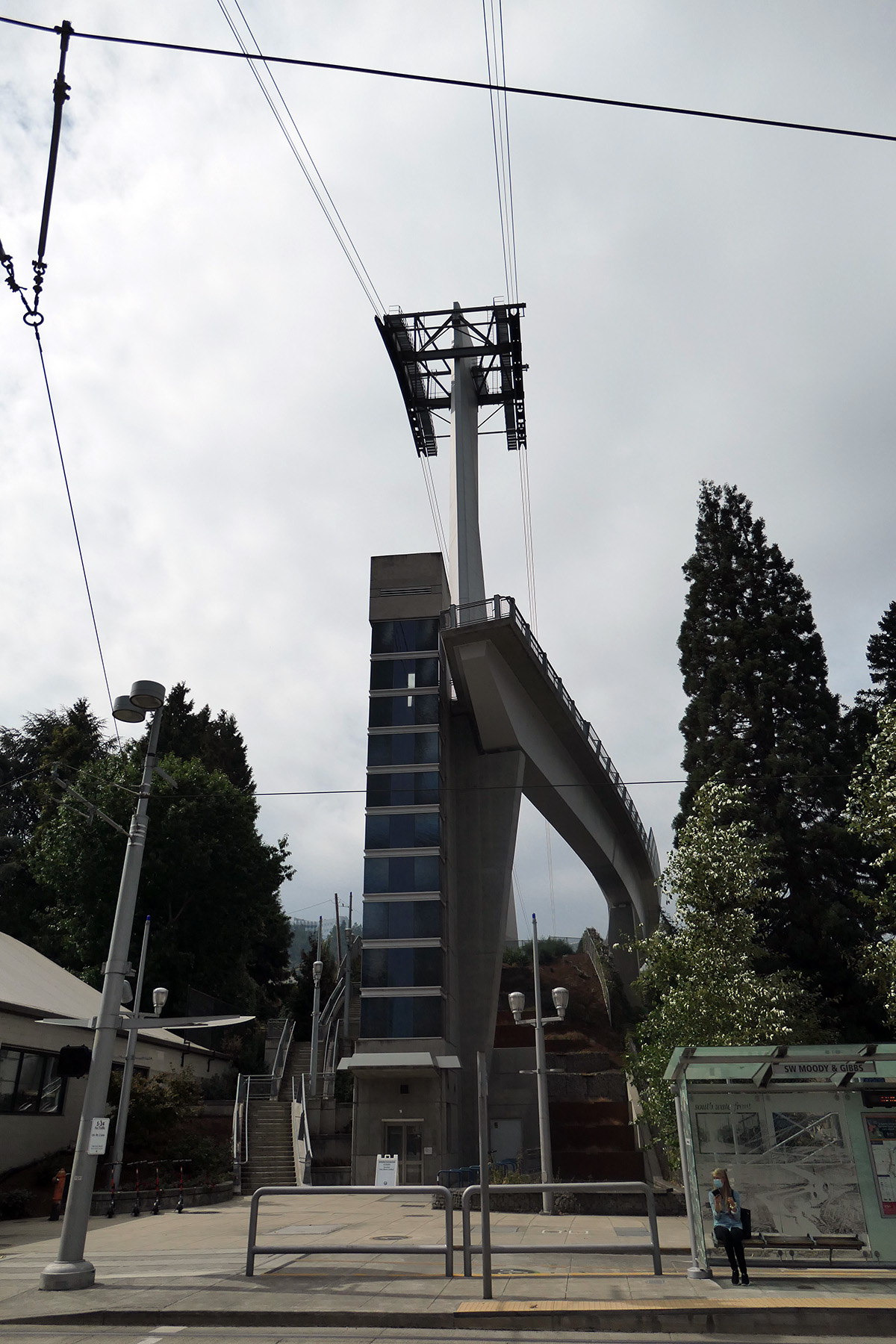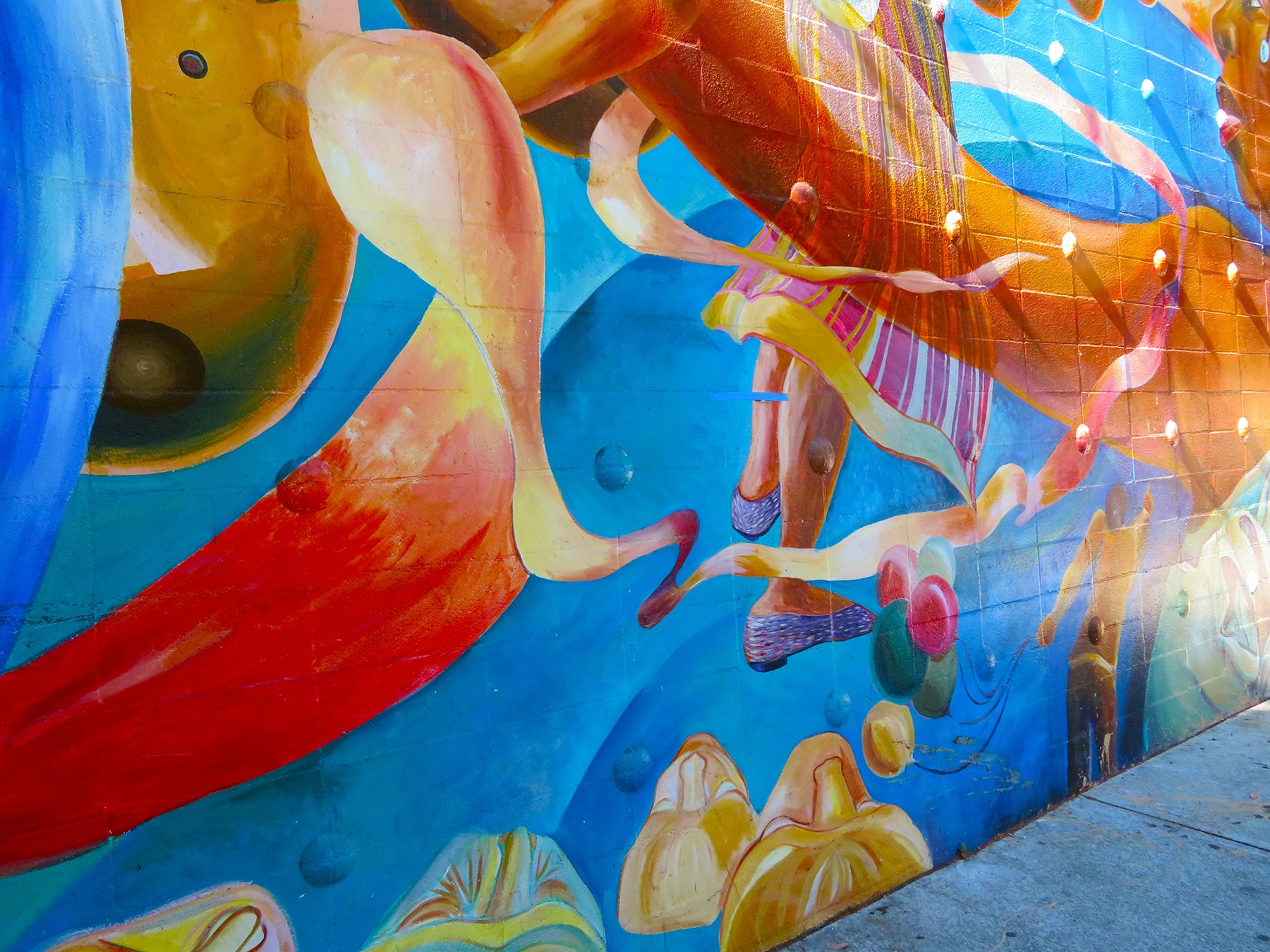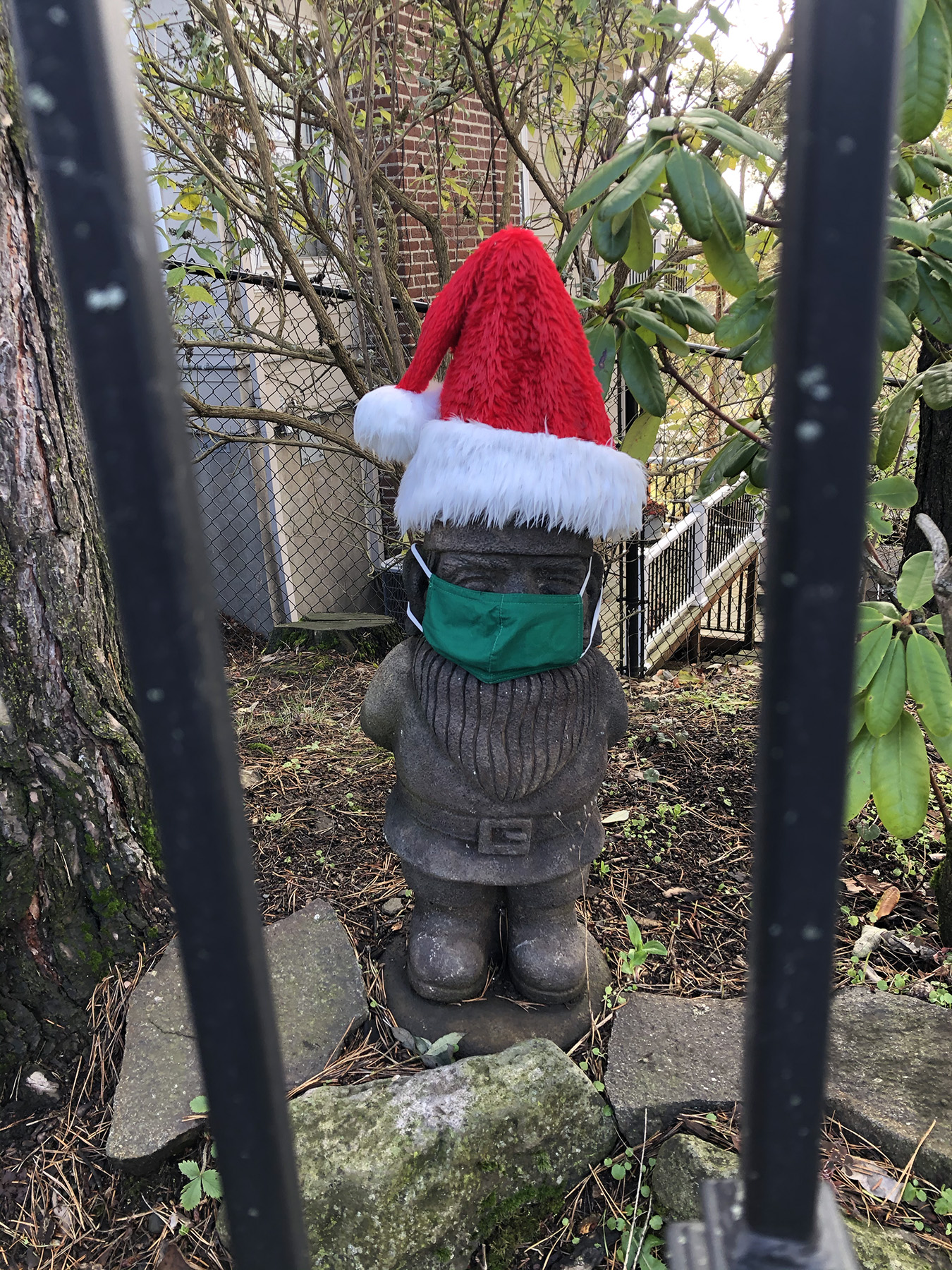Lots of thoughts about dependency lately. Triggered by general sorrow about the ongoing wars, or specific preoccupation with weather-related problems, never mind an aging body necessitating caution. We are so intensely dependent on the actions and solidarity of others, their help and support, their wisdom, skills, presence and availability in our lives. “Nothing wrong with solidarity, support, wisdom, presence,” you say? I agree – but to depend on it also means to suffer if it isn’t available, and I experience a degree of helplessness just thinking about that scenario which bugs the hell out of me.

Antony Gormley – Horizon Field Hamburg, 2012, steel, wood, 25 m x 50 m, 60t (thereof 40t steel), 7.40m above hall floor, Deichtorhallen, Hamburg, 2012
Autonomy is shrinking in a world that closes in around you, with threats to your physical safety, most pronounced in war zones, but similarly present with a climate that wrecks havoc on your immediate surround, or age that insists on limitations. I find it most upsetting in regards to freedom of movement – or absence thereof – again in the life and death scenario of incoming bombs preventing relocation, or floods and fires forcing relocation, or a simple ice storm keeping you stuck inside without your daily refueling in nature because you can’t afford to break a bone or two.

Probably not a coincidence that I was drawn back to a poem by one of my favorite poets of all times, a poem that celebrates the independence of the soul (relative even to us, its bodily container), and also of quotidian objects like mirrors that exist and work regardless of anyone’s attention. It drives home several points: independence is desirable and we simply have to accept that we can’t always call the shots – even our own soul might or might not attend to us, depending on its own whims and wishes. But the poem also comforts with the suggestion that there are nonetheless states where gifts – and closeness – are still available. Its speculation of likely interdependence, made in the last lines, somehow softens the burden of dependence.

My favorite stanza, though, is this:
We can count on it
when we’re sure of nothing
and curious about everything.
Since this is my perpetual state, frankly, I cling to Szymborska’s suggestion that soul will be regularly on hand.
A Few Words on the Soul
We have a soul at times.
No one’s got it non-stop,
for keeps.
Day after day,
year after year
may pass without it.
Sometimes
it will settle for awhile
only in childhood’s fears and raptures.
Sometimes only in astonishment
that we are old.
It rarely lends a hand
in uphill tasks,
like moving furniture,
or lifting luggage,
or going miles in shoes that pinch.
It usually steps out
whenever meat needs chopping
or forms have to be filled.
For every thousand conversations
it participates in one,
if even that,
since it prefers silence.
Just when our body goes from ache to pain,
it slips off-duty.
It’s picky:
it doesn’t like seeing us in crowds,
our hustling for a dubious advantage
and creaky machinations make it sick.
Joy and sorrow
aren’t two different feelings for it.
It attends us
only when the two are joined.
We can count on it
when we’re sure of nothing
and curious about everything.
Among the material objects
it favors clocks with pendulums
and mirrors, which keep on working
even when no one is looking.
It won’t say where it comes from
or when it’s taking off again,
though it’s clearly expecting such questions.
We need it
but apparently
it needs us
for some reason too.
—Translated by Clare Cavanagh and Stanisław Baranczak
If the soul is an independent agent leaving us soulless for years at a time, it is interesting that we are nonetheless so committed to pave the way for its escape – think of the customs so prevalent in many cultures to shroud mirrors in the house after a death occurred, for fear the soul might be trapped in one. Souls and mirrors have a long history of connection in mythology and literature (as does death and mirrors, come to think of it. Break a mirror: 7 years of misfortune, likely leading to death! Make a mirror: death guaranteed at a young age, as it turns out. Fabrication of this luxury item involved the use of noxious substances, quicksilver included, until very recently, establishing an average life expectancy of but 30 years for the members of the guilds in Italy and France that produced mirrors as well as glass ware.)

The largest mirror I ever saw was an installation in a huge former market hall in my hometown of Hamburg, Germany, as part of the Documenta in 2012. Called Horizon Field, it was one of sculptor Antony Gormley‘s ongoing explorations of the interdependence of humans and their environments, both regarding their spontaneous interactions, or their effects on each other.
Imagine 3800 square meters of empty hall with a platform suspended from the ceiling, about 25 feet above you in the air. Made of 40 tons of steel, it took a full month to install.

The whole thing was 82 feet wide and 164 feet long, dark as night from below, and coated with a silver mirror on top, reflecting the flood of light coming in from the arched glass windows. A single person walking across it (you had to stash your shoes at the bottom of the stair case, guards making sure of it) could make the thing vibrate.

It was fascinating to watch how visitors were preoccupied with their own mirror images laid out underneath them, rather than exploring the strange doubling of architectural features of an industrial building that had played historically a huge role in the enrichment of the Hanseatic economy. Built between 1911 and 1914, the hall is one of the few surviving examples of industrial architecture from the transitional period between Art Nouveau and 20th century design.






It was also a perplexing sight to see a large proportion of the visitors now in their socks, slipping and sliding with child-like amusement, centered on their proprioceptive senses once done with visual self-admiration. It was somewhat challenging to photograph it all given the swinging of the platform, and a slight queasiness induced by the oscillations. But staying underneath, in relative darkness, was not the best option either, wondering, with the mind of a skeptic, if and when that thing would come crashing down. Too many associations with the impending doom signaled by breaking mirrors….


Well, I was free to move, then, and walked off to wander the streets still familiar to me. No bombs or ice storms keeping me from it – unclear, however, if in company of soul.
Music today is by Arvo Pärt, his 1977 Tabula Rasa (and not Spiegel im Spiegel as one might have predicted.) I just love those meditations, and they fit the travels of the soul as well.




